Taxi Driver
8.4 /10 1 Votes
Director Martin Scorsese Screenplay Paul Schrader Awards Palme dOr Writer Paul Schrader Language English | 8.4/10 IMDb Genre Crime, Drama Film series Night Worker film series Duration Country United States | |||||||||||||||||||||||||||||||||
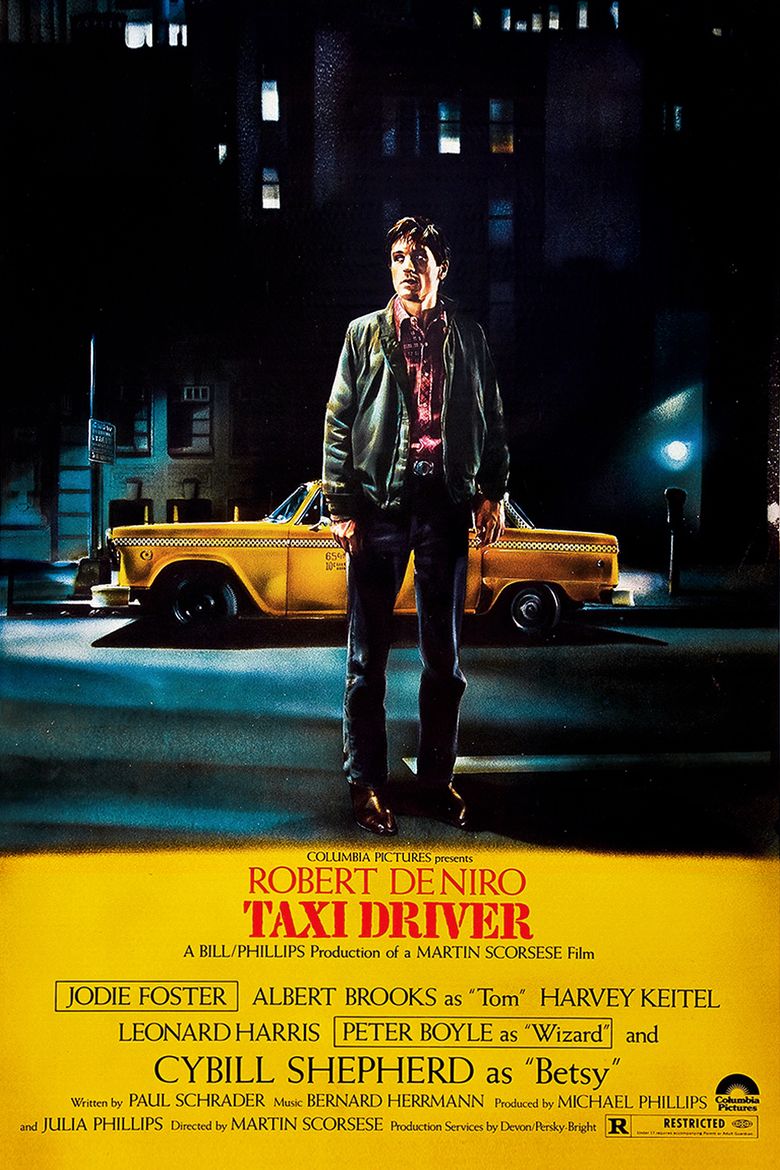 | ||||||||||||||||||||||||||||||||||
Release date February 8, 1976 (1976-02-08) Cast Robert De Niro (Travis Bickle), Cybill Shepherd (Betsy), Harvey Keitel ('Sport' Matthew), Jodie Foster (Iris Steensma), Peter Boyle (Wizard), Leonard Harris (Senator Charles Palantine)Tagline On every street in every city, there's a nobody who dreams of being a somebody. Similar Goodfellas, Raging Bull, The King of Comedy (1983 film) | ||||||||||||||||||||||||||||||||||
Taxi driver 5 8 movie clip you talkin to me 1976 hd
Taxi Driver is a 1976 American neo-noir psychological thriller film directed by Martin Scorsese and written by Paul Schrader. Set in New York City following the Vietnam War, the film stars Robert De Niro, and features Jodie Foster, Harvey Keitel, Cybill Shepherd, Peter Boyle, and Albert Brooks.
Contents
- Taxi driver 5 8 movie clip you talkin to me 1976 hd
- Taxi driver 1976 official trailer hd
- Plot
- Cast
- Production
- Music
- Controversies
- John Hinckley Jr
- Themes and interpretations
- Box office
- Critical response
- Legacy
- You talkin to me
- Home media
- Sequel and remake
- Taxi driver 1 8 movie clip travis visits betsy 1976 hd
- Taxi driver 7 8 movie clip suck on this 1976 hd
- References
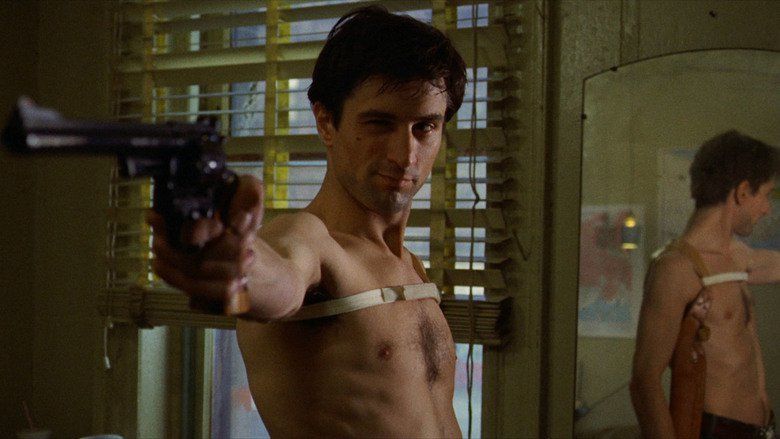
Critically acclaimed upon release and nominated for four Academy Awards, including Best Picture, Taxi Driver won the Palme d'Or at the 1976 Cannes Film Festival. It is regularly cited by critics, film directors, and audiences alike as one of the greatest films of all time. In 2012, Sight & Sound named it the 31st-best film ever in its decennial critics' poll, ranked with The Godfather Part II, and the fifth-greatest film of all time on its directors' poll. The film was considered "culturally, historically or aesthetically" significant by the US Library of Congress and was selected for preservation in the National Film Registry in 1994.
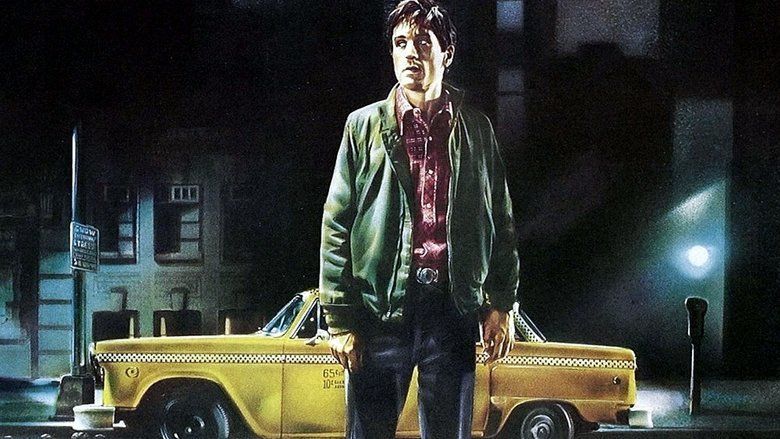
Taxi driver 1976 official trailer hd
Plot

Travis Bickle, a 26-year-old honorably discharged U.S. Marine, is a lonely, depressed young man living on his own in New York City. He becomes a taxi driver to cope with his chronic insomnia, driving passengers every night around the city's boroughs. He also spends time in porn theaters and keeps a diary. Travis becomes infatuated with Betsy, a campaign volunteer for Senator and presidential candidate Charles Palantine. After watching her interact with fellow worker Tom through her window, Travis enters to volunteer, as a pretext to talk to her, and takes her out for coffee. On a later date, he takes her to see a pornographic film, which offends her, and she goes home alone. His attempts at reconciliation by sending flowers are rebuffed, so he berates her at the campaign office, before being kicked out by Tom.
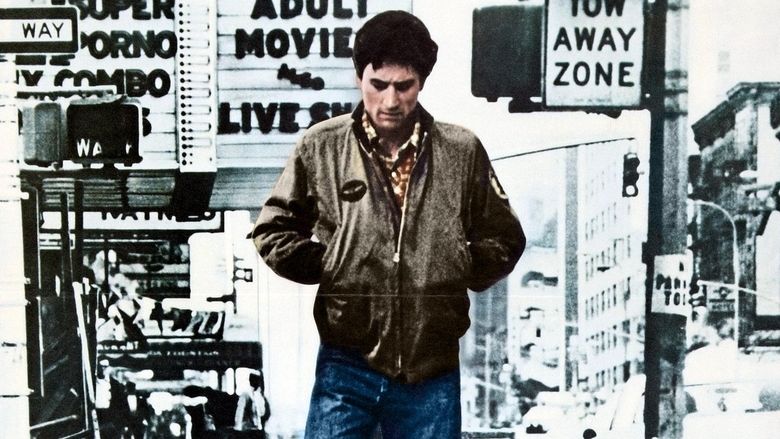
Travis confides in fellow taxi driver Wizard about his thoughts, which are beginning to turn violent; however, Wizard assures him that he will be fine, leaving Travis to his own destructive path. Travis is disgusted by the sleaze, dysfunction, and prostitution that he witnesses throughout the city, and attempts to find an outlet for his frustrations by beginning a program of intense physical training.

A fellow taxi driver refers Travis to illegal gun dealer, Easy Andy, from whom Travis buys a number of handguns. At home, Travis practices drawing his weapons and constructs a sleeve gun to hide and then quickly deploy a gun from his sleeve.
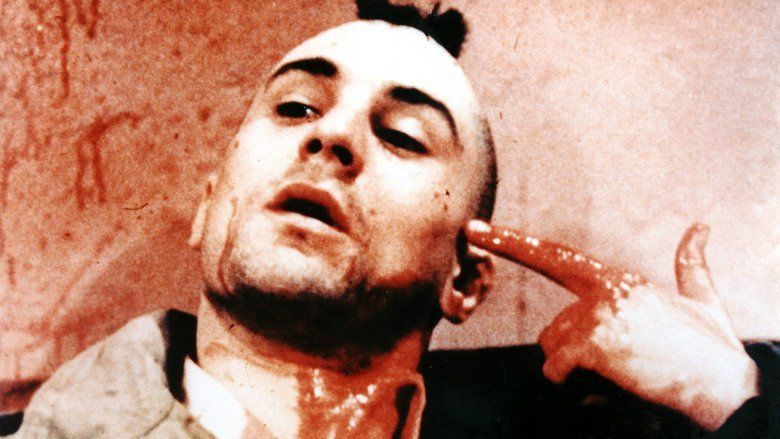
One night, Travis enters a convenience store moments before an attempted armed robbery, and he fatally shoots the robber. The shop owner takes responsibility for the shooting, taking Travis' handgun.
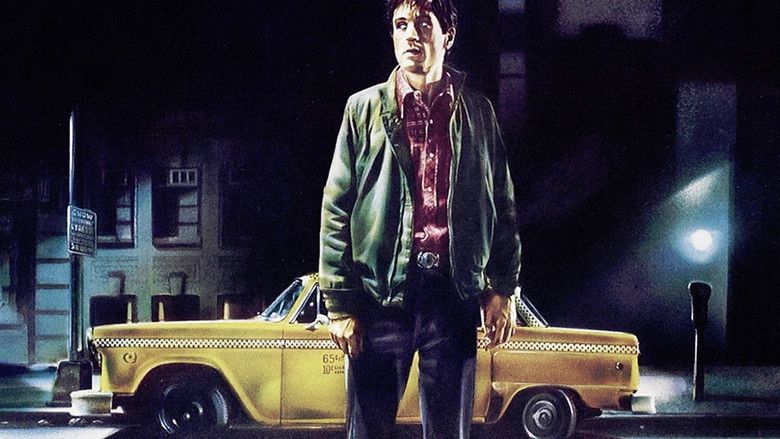
Earlier, child prostitute Iris had entered Travis' cab, attempting to escape her pimp Matthew "Sport" Higgins. Sport dragged Iris from the cab and threw Travis a crumpled $20 bill, which continually reminds Travis of her and the corruption that surrounds him.

Sometime later, Travis hires Iris, but instead of having sex with her, attempts to dissuade her from continuing in prostitution. He fails to completely turn her from her course, but she does agree to meet with him for breakfast the next day. Travis leaves a letter to Iris at his apartment saying he will soon be dead, and money for her to return home.
After shaving his head into a mohawk, Travis attends a public rally where he plans to assassinate Senator Palantine, but Secret Service agents notice him with his hand in his coat and chase him off. Travis flees and later goes to the East Village to invade Sport's brothel. A violent gunfight ensues, and Travis kills Sport, a bouncer, and a mafioso. Travis is severely injured with multiple gunshot wounds. Iris witnesses the fight and, hysterical with fear, pleads with Travis to stop the killing.
After the gunfight, Travis attempts suicide, but has run out of ammunition and resigns himself to lying on a sofa until police arrive. When they do, he places his index finger against his temple pantomiming the act of shooting himself.
Travis, having recovered from his wounds and returned to work, finds himself praised by favorable press reports for shooting the bad guys. He has also received a letter from Iris' father thanking him for saving her life and revealing that she has returned home to Pittsburgh, where she is going to school.
Later, Travis also reconciles with Betsy when dropping her off at her home in his cab. As she tries to pay her fare, Travis simply smiles at her, turns off the meter, and drives off.
Cast
Production
According to Scorsese, it was Brian De Palma who introduced him to Schrader. In Scorsese on Scorsese, the director talks about how much of the film arose from his feeling that movies are like dreams or drug-induced reveries. He admits attempting to incubate within the viewer the feeling of being in a limbo state somewhere between sleeping and waking. He calls Travis an "avenging angel" floating through the streets of a New York City intended to represent all cities everywhere. Scorsese calls attention to improvisation in the film, such as in the scene between De Niro and Cybill Shepherd in the coffee shop. The director also cites Alfred Hitchcock's The Wrong Man and Jack Hazan's A Bigger Splash as inspirations for his camerawork in the movie.
In Scorsese on Scorsese, the director mentions the religious symbolism in the story, comparing Bickle to a saint who wants to cleanse or purge both his mind and his body of weakness. Bickle attempts to kill himself near the end of the movie as a tribute to the samurai's "death with honour" principle.
When Travis meets Betsy to join him for coffee and pie, she is reminded of a line in Kris Kristofferson's song "The Pilgrim, Chapter 33": "He's a prophet and a pusher, partly truth, partly fiction—a walking contradiction." On their date, Bickle takes her to see a Swedish "sex education" film, which is in fact the American sexploitation film Sexual Freedom in Denmark with added Swedish sound.
Shot during a New York City summer heat wave and sanitation strike, Taxi Driver came into conflict with the MPAA for its violence (Scorsese de-saturated the color in the final shoot-out, and the film got an R rating). To achieve the atmospheric scenes in Bickle's cab, the sound men would get in the trunk and Scorsese and his cinematographer, Michael Chapman, would ensconce themselves on the back seat floor and use available light to shoot. Chapman admitted the filming style was greatly influenced by Nouvelle Vague filmmaker Jean-Luc Godard and his cinematographer Raoul Coutard due to the fact the crew didn't have the time nor the money to do "traditional things."
In writing the script, Schrader was inspired by the diaries of Arthur Bremer (who shot presidential candidate George Wallace in 1972) and Fyodor Dostoyevsky's Notes from Underground. The writer also used himself as inspiration; prior to writing the screenplay, Schrader was in a lonely and alienated position, much like Bickle is. Following a divorce and a breakup with a live-in girlfriend, he spent a few weeks living in his car. He wrote the script in under a month while staying in his former girlfriend's apartment while she was away.
Schrader decided to make Bickle a Vietnam vet because the national trauma of the war seemed to blend perfectly with Bickle's paranoid psychosis, making his experiences after the war more intense and threatening. Thus, Bickle chooses to drive his taxi anywhere in the city as a way to feed his hate.
While preparing for his role as Bickle, De Niro was filming Bernardo Bertolucci's 1900 in Italy. According to Boyle, he would "finish shooting on a Friday in Rome ... get on a plane ... [and] fly to New York." De Niro obtained a cab driver's license, and when on break would pick up a cab and drive around New York for a couple of weeks, before returning to Rome to resume filming 1900. De Niro apparently lost 35 pounds and listened repeatedly to a taped reading of the diaries of Arthur Bremer. When he had time off from shooting 1900, De Niro visited an army base in Northern Italy and tape-recorded soldiers from the Midwestern United States, whose accents he thought might be appropriate for Travis's character.
When Bickle decides to assassinate Senator Palantine, he cuts his hair into a Mohawk. This detail was suggested by actor Victor Magnotta, a friend of Scorsese's who had a small role as a Secret Service agent and who had served in Vietnam. Scorsese later noted, "Magnotta had talked about certain types of soldiers going into the jungle. They cut their hair in a certain way; looked like a Mohawk ... and you knew that was a special situation, a commando kind of situation, and people gave them wide berths ... we thought it was a good idea."
Jodie Foster was not the first choice to play Iris. Scorsese considered Melanie Griffith, Linda Blair, Bo Derek, and Carrie Fisher for the role. A newcomer, Mariel Hemingway, auditioned for the role but turned it down due to pressure from her family. After the other actresses turned down the role as well, Foster, an experienced child actor, was chosen.
In the original draft, Schrader had written the role of Sport as a black man. There were also additions of other negative black roles. Scorsese believed that this would give the film an overly racist subtext, so they were changed to white roles. The Terminal Bar was featured in a scene in the film.
Schrader originally set the film in Los Angeles, but it was moved to New York City because taxicabs were much more prevalent there than in Los Angeles.
Taking place in an actual apartment, the tracking shot over the murder scene at the end took three months of preparation just because the production team had to cut through the ceiling in order to get it right.
Scorsese brought in the film title designer Dan Perri to design the title sequence for Taxi Driver. Perri had been Scorsese's original choice to design the titles for Alice Doesn't Live Here Anymore in 1974, but Warner Bros would not allow him to hire an unknown designer. By the time Taxi Driver was going into production, Perri had established his reputation with his work on The Exorcist, and Scorsese was now able to hire him. Perri created the opening titles for Taxi Driver using second unit footage which he colour-treated through a process of film copying and slit-scan, resulting in a highly stylised graphic sequence that evoked the "underbelly" of New York City through lurid colours, glowing neon signs distorted nocturnal images and deep black levels. Perri went on to design opening titles for a number of major films after this including Star Wars (1977) and Raging Bull (1980).
Music
The music by Bernard Herrmann was his final score before his death on December 24, 1975, and the film is dedicated to his memory. Robert Barnett of MusicWeb International has said that it contrasts deep, sleazy noises, representing the "scum" that Travis sees all over the city, with the saxophone, a musical counterpart to Travis, creating a mellifluously disenchanted troubadour. Barnett also observes that the opposing noises in the soundtrack—gritty little harp figures, hard as shards of steel, as well as a jazz drum kit placing the drama in the city—are indicative of loneliness in the midst of mobs of people. Deep brass and woodwinds are also evident. Barnett heard in the drumbeat a wild-eyed martial air charting the pressure on Bickle, who is increasingly oppressed by the corruption around him, and that the harp, drum, and saxophone play significant roles in the music.
Also featured in the film is Jackson Browne's "Late for the Sky", appearing in a scene where couples are dancing on the program American Bandstand as Travis watches on his television.
The soundtrack for the film, re-released in 1998 on CD, includes an expanded version of the score as well as the tracks from the original 1976 LP. It also features album notes by director Martin Scorsese, as well as full documentation for the tracks, linking them in great detail to individual takes. Track 12, "Diary of a Taxi Driver", features Herrmann's music with De Niro's voice-over taken directly from the soundtrack.
Some of the tracks feature relatively long titles, representative of the fact that similar reprises are heard in many scenes.
Only the A-side of the 1976 soundtrack LP featured the Herrmann score. The B-side (tracks 14 through 18 on the CD) was dedicated to jazz "interpretations" of the score, arranged and conducted by Dave Blume. None of these recordings appeared in the film.
Controversies
The climactic shoot-out was considered intensely graphic by a few critics at the film's premiere. To attain an "R" rating, Scorsese had the colors de-saturated, making the brightly colored blood less prominent. In later interviews, Scorsese commented that he was actually pleased by the color change and considered it an improvement over the originally filmed scene, which is now lost. In the special-edition DVD, Michael Chapman, the film's cinematographer, regrets the decision and the fact that no print with the unmuted colors exists anymore, as the originals had long since deteriorated.
Some critics showed concern over 12-year-old Foster's presence during the climactic shoot-out. Foster said that she was present during the setup and staging of the special effects used during the scene; the entire process was explained and demonstrated for her, step by step. Moreover, Foster said, she was fascinated and entertained by the behind-the-scenes preparation that went into the scene. In addition, before being given the part, Foster was subjected to psychological testing to ensure that she would not be emotionally scarred by her role, in accordance with California Labor Board requirements.
Copies of the film distributed for TV broadcast had an unexplained disclaimer added during the closing credits:
To our Television Audience: In the aftermath of violence, the distinction between hero and villain is sometimes a matter of interpretation or misinterpretation of facts. "Taxi Driver" suggests that tragic errors can be made. The Filmmakers.
John Hinckley Jr.
Taxi Driver formed part of the delusional fantasy of John Hinckley Jr. that triggered his attempted assassination of President Ronald Reagan in 1981, an act for which he was found not guilty by reason of insanity. Hinckley stated that his actions were an attempt to impress actress Jodie Foster, on whom Hinckley was fixated, by mimicking Travis's mohawked appearance at the Palantine rally. His attorney concluded his defense by playing the movie for the jury.
Themes and interpretations
Sabine Haenni, a professor at Cornell University, commented on the film in her article "Geographies of Desire: Postsocial Urban Space and Historical Revision in the Films of Martin Scorsese" pg. 67: "While Taxi Driver chronicles Travis's excessive response to the perceived decline of the city, perhaps more fundamentally, the decline of the city seems to engender the decline of the male hero—Travis's inability to function in individual, collective, and heteronormative terms."
Roger Ebert has written of the film's ending:
There has been much discussion about the ending, in which we see newspaper clippings about Travis's "heroism" of saving Iris, and then Betsy gets into his cab and seems to give him admiration instead of her earlier disgust. Is this a fantasy scene? Did Travis survive the shoot-out? Are we experiencing his dying thoughts? Can the sequence be accepted as literally true? ... I am not sure there can be an answer to these questions. The end sequence plays like music, not drama: It completes the story on an emotional, not a literal, level. We end not on carnage but on redemption, which is the goal of so many of Scorsese's characters.
James Berardinelli, in his review of the film, argues against the dream or fantasy interpretation, stating:
Scorsese and writer Paul Schrader append the perfect conclusion to Taxi Driver. Steeped in irony, the five-minute epilogue underscores the vagaries of fate. The media builds Bickle into a hero, when, had he been a little quicker drawing his gun against Senator Palantine, he would have been reviled as an assassin. As the film closes, the misanthrope has been embraced as the model citizen—someone who takes on pimps, drug dealers, and mobsters to save one little girl.
On the Laserdisc audio commentary, Scorsese acknowledged several critics' interpretation of the film's ending as being Bickle's dying dream. He admits that the last scene of Bickle glancing at an unseen object implies that Bickle might fall into rage and recklessness in the future, and he is like "a ticking time bomb". Writer Paul Schrader confirms this in his commentary on the 30th-anniversary DVD, stating that Travis "is not cured by the movie's end", and that "he's not going to be a hero next time." When asked on the website Reddit about the film's ending, Schrader said that it was not to be taken as a dream sequence, but that he envisioned it as returning to the beginning of the film—as if the last frame "could be spliced to the first frame, and the movie started all over again."
The film has also been connected with the 1970s wave of vigilante films and has been noted as a more respectable New Hollywood counterpart to the numerous exploitation vigilante films of the decade. However, despite similarities between Taxi Driver and the vigilante films of the 1970s, the film has also been explicitly distinguished as not being a vigilante film or not belonging to the 1970s vigilante film wave.
Box office
Filmed on a budget of $1.3 million, Taxi Driver was a financial success, grossing $28,262,574 in the United States, making it the 17th-highest-grossing film of 1976.
Critical response
Roger Ebert instantly praised it as one of the greatest films he had ever seen, claiming:
Taxi Driver is a hell, from the opening shot of a cab emerging from stygian clouds of steam to the climactic killing scene in which the camera finally looks straight down. Scorsese wanted to look away from Travis's rejection; we almost want to look away from his life. But he's there, all right, and he's suffering.
It was nominated for four Academy Awards, including Best Picture and Best Actor (De Niro), and received the Palme d'Or at the 1976 Cannes Film Festival. It has been selected for preservation in the United States National Film Registry. The film was chosen by Time as one of the 100 best films of all time.
Rotten Tomatoes gives the film a score of 99% based on reviews from 68 critics with an average rating of 9/10; the site's consensus states: "A must-see film for movie lovers, this Martin Scorsese masterpiece is as hard-hitting as it is compelling, with Robert De Niro at his best." Metacritic gives the film a score of 93 out of 100, based on reviews from 8 critics, indicating "universal acclaim."
The July/August 2009 issue of Film Comment polled several critics on the best films to win the Palme d'Or at the Cannes Film Festival. Taxi Driver placed first, above films such as Il Gattopardo, Viridiana, Blowup, The Conversation, Apocalypse Now, La Dolce Vita, and Pulp Fiction.
Taxi Driver was ranked by the American Film Institute as the 52nd-greatest American film on its AFI's 100 Years...100 Movies (10th Anniversary Edition) list, and Bickle was voted the 30th greatest villain in a poll by the same organization. Empire also ranked him 18th in its "The 100 Greatest Movie Characters" poll, and the film ranks #17 on the magazine's 2008 list of the 500 greatest movies of all time.
Time Out magazine conducted a poll of the 100 greatest movies set in New York City. Taxi Driver topped the list placing at No. 1.
Schrader's screenplay for the film was ranked the 43rd greatest ever written by the Writers Guild of America.
Legacy
Taxi Driver, American Gigolo, Light Sleeper, and The Walker make up a series referred to variously as the "Man in a Room" or "Night Worker" films. Screenwriter Paul Schrader (who directed the latter three films) has said that he considers the central characters of the four films to be one character, who has changed as he has aged. The film also influenced the Charles Winkler film You Talkin' to Me?
In the 2012 film Seven Psychopaths, psychotic Los Angeles actor Billy Bickle (Sam Rockwell) believes himself to be the illegitimate son of Travis Bickle.
The vigilante ending inspired Jacques Audiard for his 2015 Palme d'Or-winning film Dheepan. The French director based the eponymous Tamil Tiger character on the one played by Robert De Niro in order to make him a "real movie hero".
"You talkin' to me?"
The catchphrase "You talkin' to me?" has become a pop culture mainstay. In 2005, it was ranked number 10 on the American Film Institute's AFI's 100 Years... 100 Movie Quotes.
In the corresponding scene, Bickle is looking into a mirror at himself, imagining a confrontation that would give him a chance to draw his gun. He says:
You talkin' to me? You talkin' to me? You talkin' to me? Then who the hell else are you talkin' to? You talkin' to me? Well I'm the only one here. Who the fuck do you think you're talking to?
Roger Ebert called it "the truest line in the film.... Travis Bickle's desperate need to make some kind of contact somehow—to share or mimic the effortless social interaction he sees all around him, but does not participate in."
Schrader does not take credit for the line, saying that his script only read "Travis speaks to himself in the mirror", and that De Niro improvised the dialogue. However, Schrader went on to say that De Niro's performance was inspired by a routine by "an underground New York comedian" whom he had once seen, possibly including his signature line. Scorsese said that he drew inspiration from John Huston's 1967 movie Reflections in a Golden Eye in a scene which Marlon Brando character is facing the mirror.
In his 2009 memoir, saxophonist Clarence Clemons said that De Niro explained the line's origins when Clemons coached De Niro to play the saxophone for the 1977 film New York, New York. Clemons said that De Niro had seen Bruce Springsteen say the line onstage at a concert as fans were screaming his name, and decided to make the line his own.
Home media
The first Collector's Edition DVD, released in 1999, was packaged as a single-disc edition release. It contained special features, such as behind-the-scenes and several trailers, including one for Taxi Driver.
In 2006, a 30th-anniversary 2-disc Collector's Edition DVD was released. The first disc contains the film itself, two audio commentaries (one by writer Schrader and the other by Professor Robert Kolker), and trailers. This edition also retains some of the special features from the earlier release on the second disc, as well as some newly produced documentary material.
A Blu-ray was released on April 5, 2011 to commemorate the film's 35th anniversary. It includes the special features from the previous 2-disc collector's edition, plus an audio commentary by Scorsese released in 1991 for the Criterion Collection, previously released on Laserdisc.
As part of the Blu-ray production, Sony gave the film a full 4K digital restoration, which included scanning and cleaning the original negative (removing emulsion dirt and scratches). Colors were matched to director-approved prints under guidance from Scorsese and director of photography Michael Chapman. An all-new lossless DTS-HD Master Audio 5.1 soundtrack was also made from the original stereo recordings by Scorsese's personal sound team. The restored print premiered in February 2011 at the Berlin Film Festival, and to promote the Blu-ray, Sony also had the print screened at AMC Theatres across the United States on March 19 and 22.
Sequel and remake
In late January 2005, a sequel was announced by De Niro and Scorsese. At a 25th-anniversary screening of Raging Bull, De Niro talked about the story of an older Travis Bickle being in development. Also in 2000, De Niro mentioned interest in bringing back the character in conversation with Actors Studio host James Lipton. In November 2013, he revealed that Schrader had done a first draft but both he and Scorsese thought that it was not good enough to go beyond.
In 2010, Variety reported rumors that Lars von Trier, Scorsese, and De Niro planned to work on a remake of the film with the same restrictions that were used in The Five Obstructions. In 2014, Paul Schrader said that it was not being made. He said, "It was a terrible idea" and "in Marty's mind, it never was something that should be done."
In December 2011, Scorsese was interviewed about combining his passion for 3D as a new medium with the legacy of older films, and said, "If I could go back in time, I'd shoot Taxi Driver in 3D. Robert De Niro in the mirror as Travis Bickle. Imagine how intimidating. 'You talking to me? You talking to me?' Amazing possibilities."
Taxi driver 1 8 movie clip travis visits betsy 1976 hd
Taxi driver 7 8 movie clip suck on this 1976 hd
References
Taxi Driver WikipediaTaxi Driver IMDb Taxi Driver themoviedb.org
